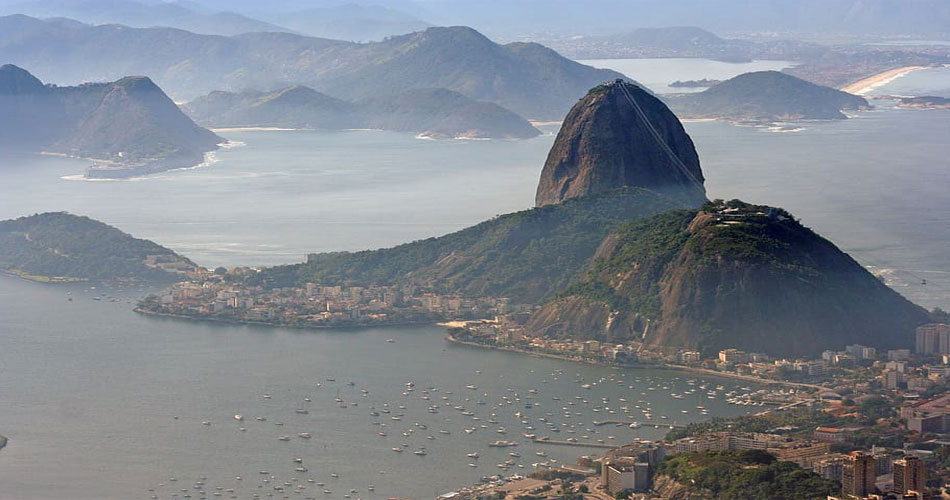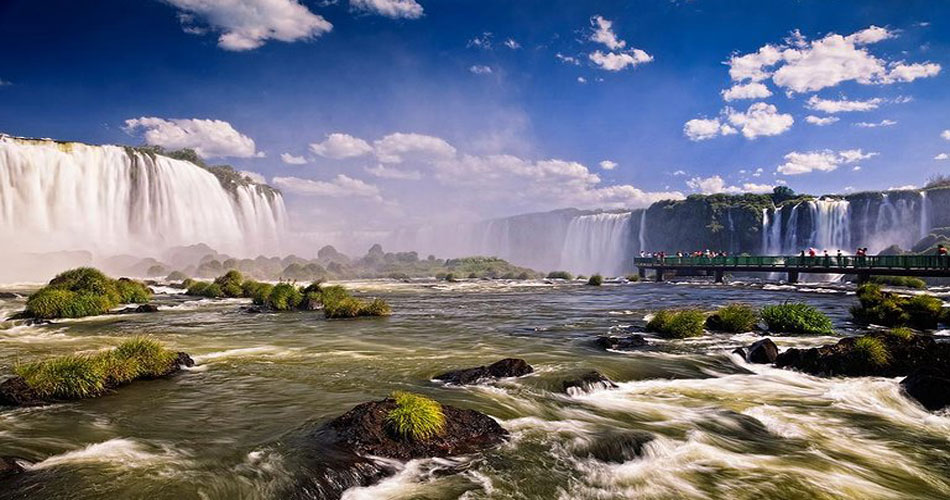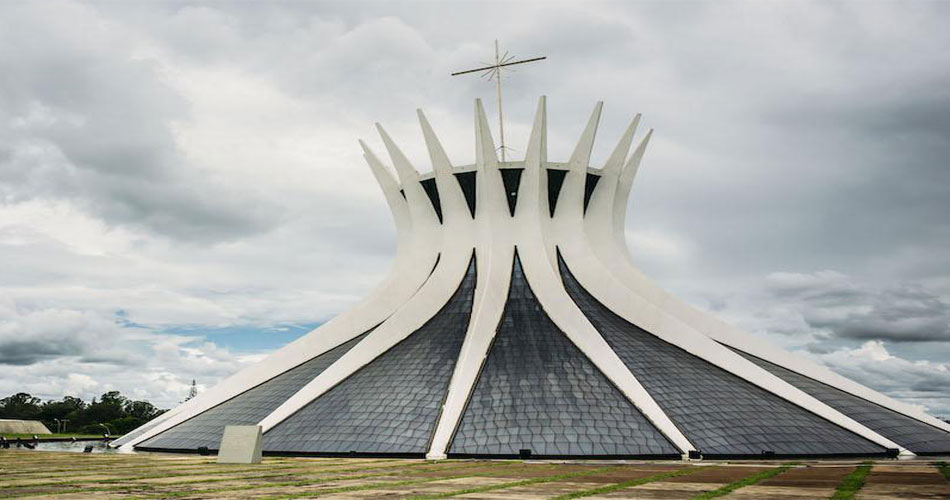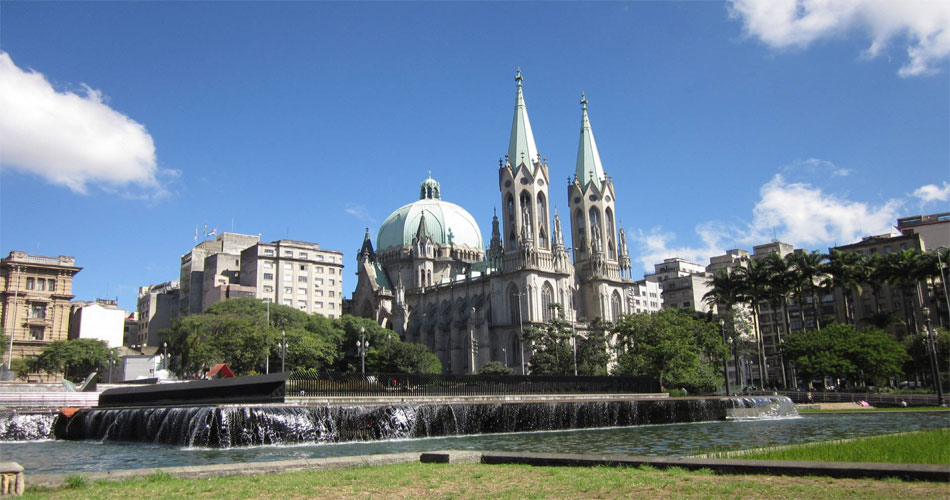Christ the Redeemer,Rio de Janeiro, Brazil

With arms outstretched 28 meters, as if to encompass all of humanity, the colossal Art Deco statue of Christ, called Cristo Redentor (Christ the Redeemer), gazes out over Rio de Janeiro and the bay from the summit of Corcovado.The second largest Art Deco statue in the world, Christ the Redeemer ascends high on the mountain, overlooking gorgeous panorama of Rio. The idea of a statue on top of Corcovado mountain first was mentioned in the middle of the 19th century. However, it was finally resolved and the statue was completed in 1931.Posited in Tijuca National Park, on the 700 m (2,300 ft) high peak, Christ the Redeemer provides the amazing panoramic views. A trip to the top is also a little adventure: getting there by train through the tropical forest is the favorite way to go.A mid-point stop on the railway leads to trails through the Tijuca National Park, a huge forest that protects springs, waterfalls, and a wide variety of tropical birds, butterflies, and plants. Several more viewpoints open out within the park.
Sugar Loaf, Rio de Janeiro, Brazil

The easily recognized emblem of Rio de Janeiro, the rounded rock peak of Sugar Loaf juts out of a tree-covered promontory, rising 394 meters above the beaches and city. Its summit is one of the first places to visit for tourists, for views of Rio and the harbor, and for the thrill of riding suspended in a cable car between Sugar Loaf and the Morro da Urca, a lower peak from which a second cableway connects to the city.Rio's first settlement began below these peaks, near the long Praia da Urca beach, and you can tour one of the three early forts there, the star-shaped Fort São João.
Iguaçu Falls Paraná, Brazil

At the point where Brazil, Paraguay, and Argentina meet, the Iguaçu river drops spectacularly in a semicircle of 247 waterfalls that thunder down into the gorge below. Just above the falls, the river is constricted to one-fourth of its usual width, making the force of the water even stronger.Some of the falls are more than 100 meters high and they cover such a broad area that you'll never see all of them at once, but you do get the broadest panorama from the Brazilian side. Catwalks and a tower give you different perspectives, and one bridge reaches all the way to one of the largest, known as the Garganta do Diabo (Devil's Throat).You can cross to the Argentinian side for closer views from catwalks that extend farther into the center of the falls. The two sides offer different perspectives and views, so most tourists plan to see both.Iguazú Falls sits right at the border of Brazil and Argentina with both countries claiming to provide the best Iguazú experience. So, which country delivers? Enchanting Travels provides the lowdown for your trip to South America.
Brasília's Modernist Architecture, Brasilia, Brazil

Brazil's new city of Brasília was carved out of the wilderness and completed in less than three years to replace Rio de Janeiro as the country's capital in 1960. The ambitious plan by Lúcio Costa and Oscar Niemeyer became a showpiece of city planning and avant-garde architecture, and it remains today as one of the world's few cities that represent a completed plan and a single architectural concept.Without the normal mix of residential and business districts, the entire governmental section is composed of major architectural highlights, which are the city's main tourist attractions. Some of the most striking surround Praça dos Tràs Poderes: the presidential palace, supreme court, and the two sharply contrasting congress buildings, plus the Historical Museum of Brasília and the Panteão da Liberdade (Pantheon of Freedom), designed by Oscar Niemeyer.Niemeyer's modernist architecture made Brazil's federal capital a Unesco World Heritage site in 1987. ... The idea was, in Niemeyer's words, "to build a new capital to bring progress to the interior of Brazil". Built in the country's heartland, Brasilia was to be the opposite of the old coastal capital Rio de Janeiro.
Sé (Cathedral) São Paulo, Brazil

The neo-Gothic cathedral was built on the site of an earlier cathedral and took from 1913 to 1967 to complete. Its building was interrupted by two world wars, which made it difficult to get the mosaics and other decorative elements from Italy. It was consecrated in 1954, on the 400th anniversary of the foundation of São Paulo. On the façade are statues of Old Testament prophets and Christ's disciples. Although the rest of the church is neo-Gothic, it is capped by a Renaissance-style dome. The interior has several interesting features, including the 10,000-pipe organ and stained glass windows picturing the history of Catholicism in Brazil. Be sure to notice the capitals on the columns, carved to represent Brazilian flora (branches of coffee and pineapples) and fauna, including armadillos. You can tour the crypt below the main church to see marble sculptures and tombs. The cathedral sits at the historic center of São Paulo, and is a good place to begin a walking tour of the old town.
Go Back To Home